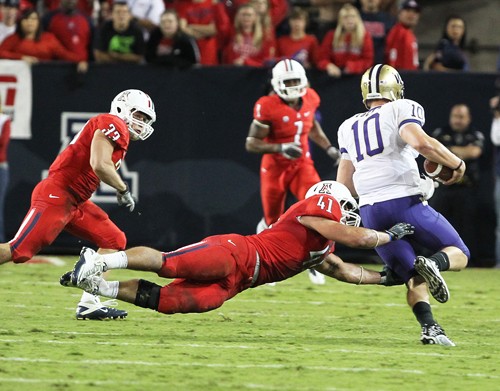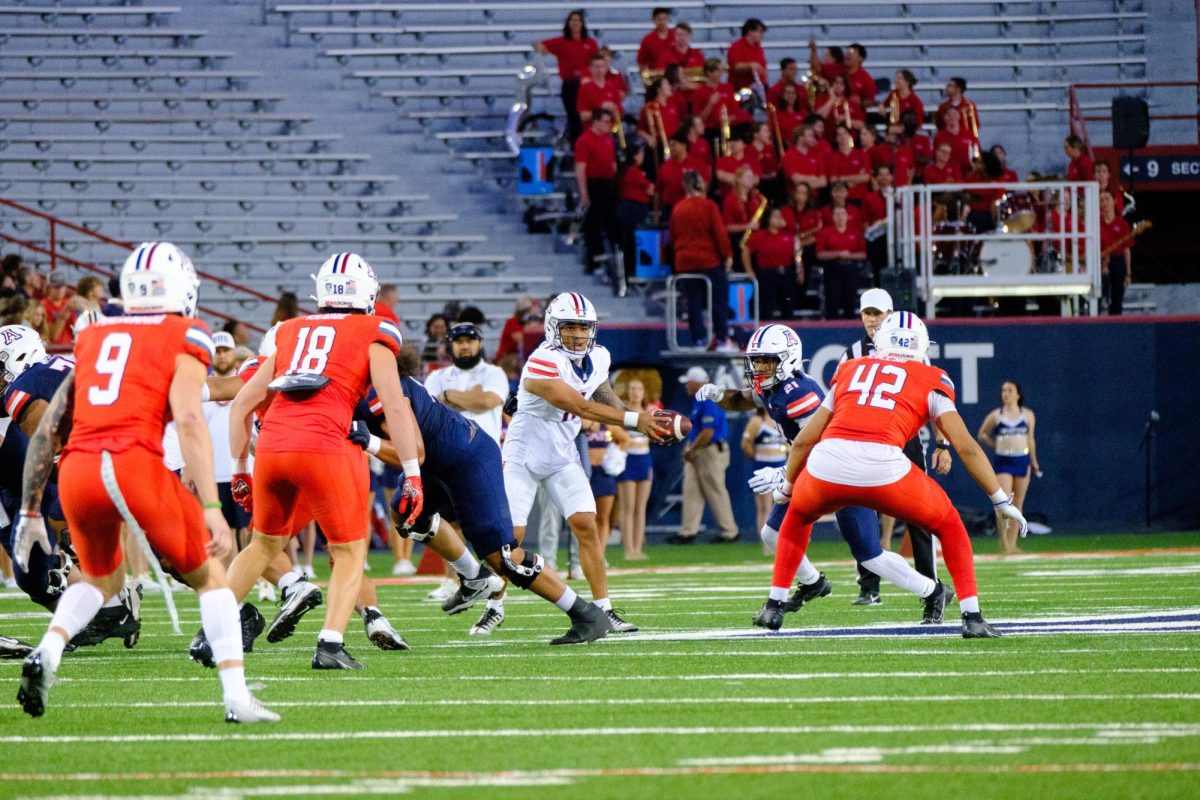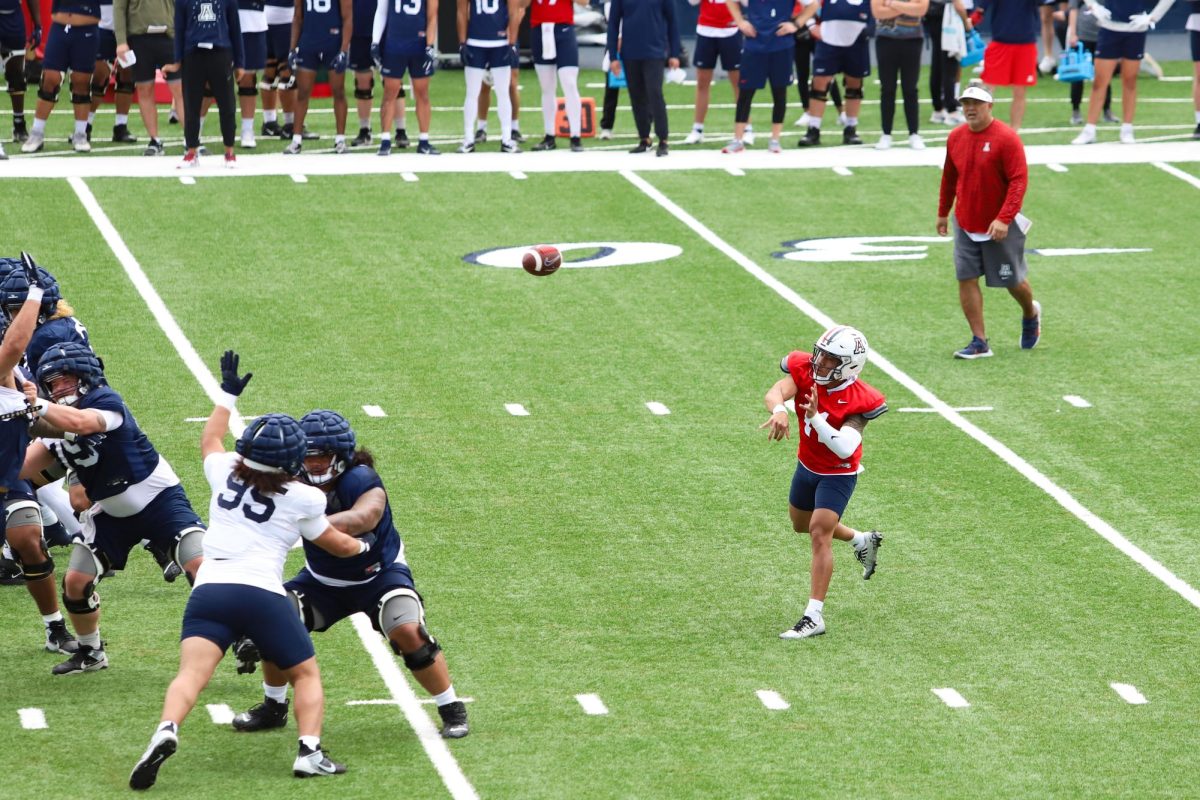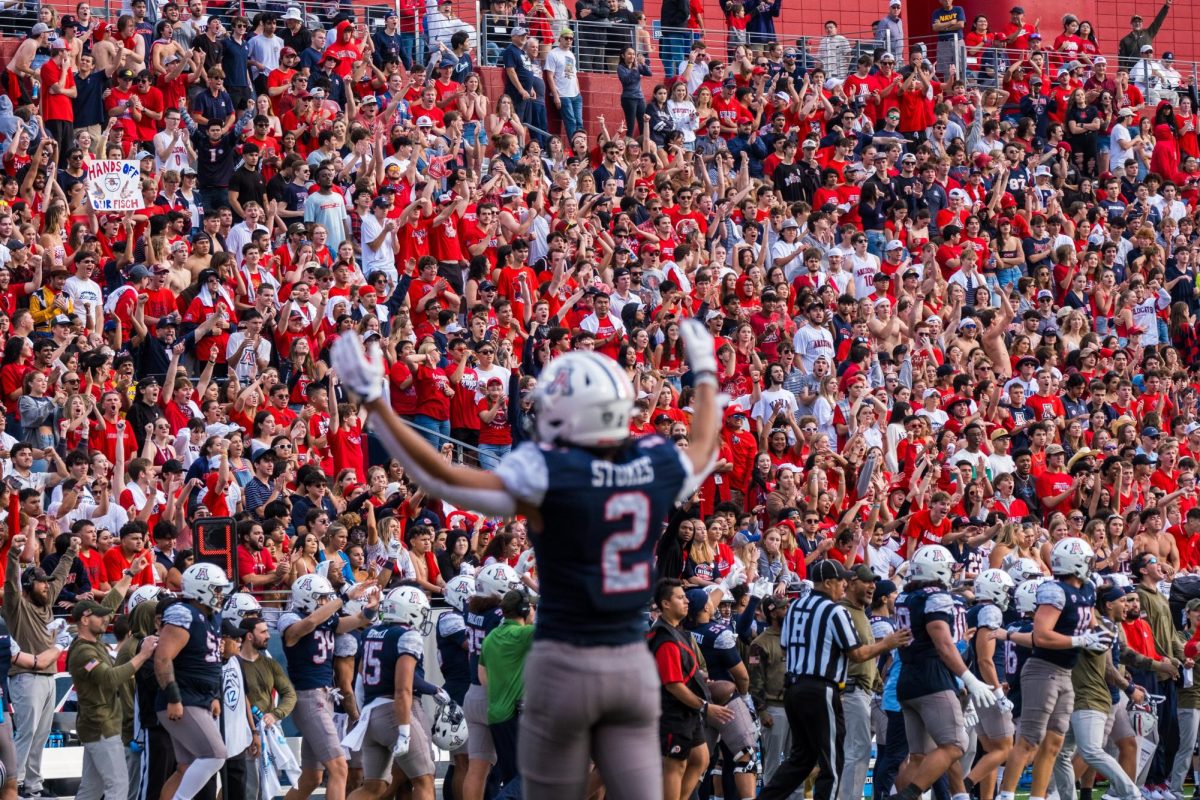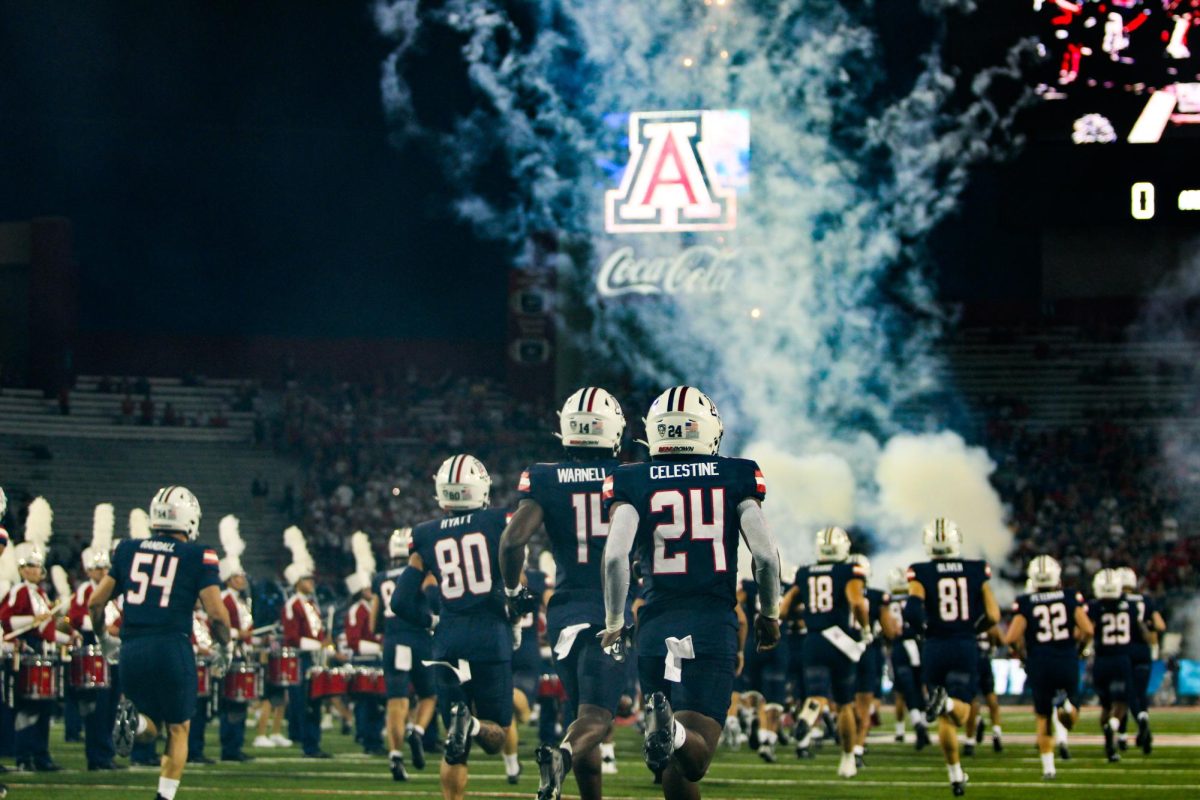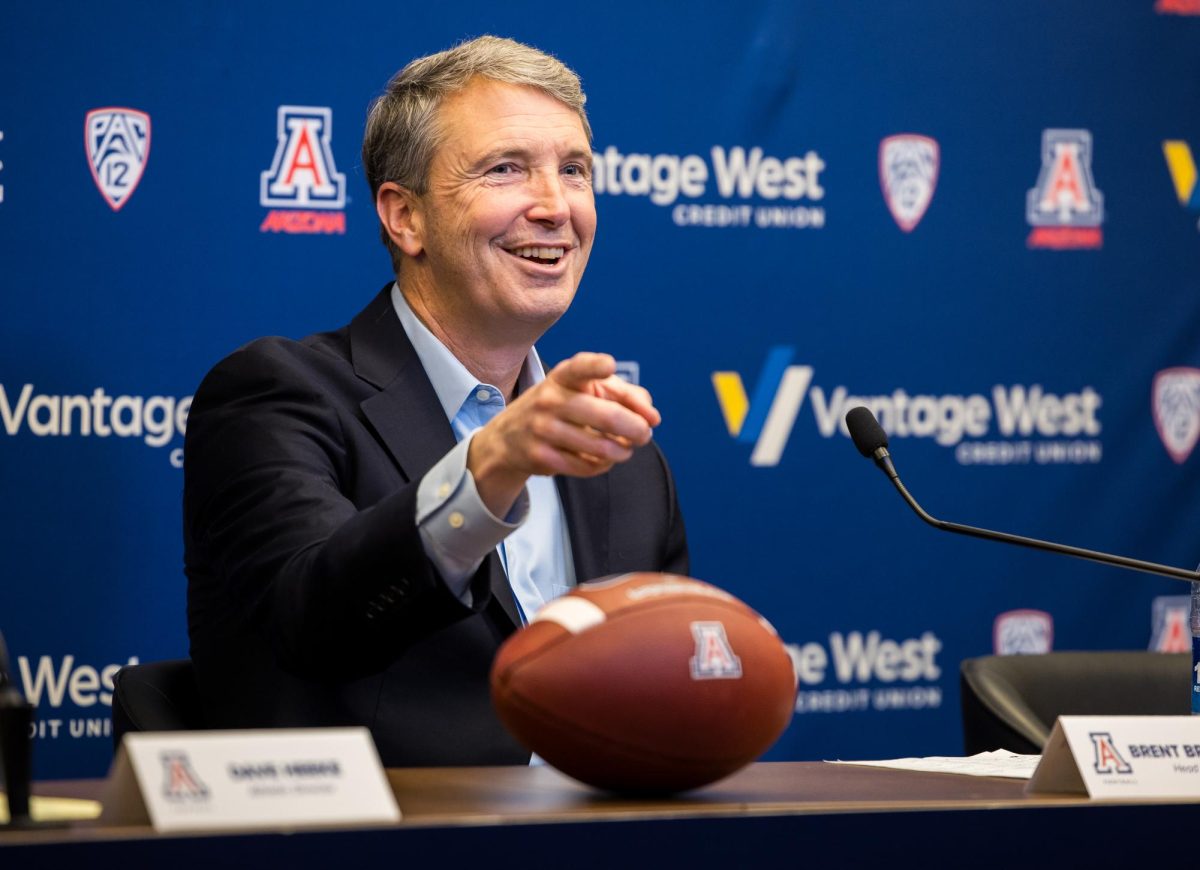College football is constantly changing, and nothing embodies that more than the ever-evolving offensive systems. Over the years we’ve seen the power option turn into the I-form turn into the pro form turn into the West Coast turn into the spread. Now we’re seeing Wildcat formations and spread-options.
The most recent variation of an offensive scheme is the “”pistol,”” something that the Wildcats will have to defend this weekend when they take on UCLA at the Rose Bowl.
“”It’s trendy right now,”” co-defensive coordinator Tim Kish said of the offense that was made popular by the University of Nevada. “”Everybody seems to think it’s a good sideline-to-sideline, but I think more or less it’s a Wildcat-type thing for offenses right now, they’re just mixing in things that you have to defend a little bit different that can cause you some headaches if you let it.””
So what is the pistol? It looks like the shotgun formation in that the quarterback is a few yards behind the center, but the running back is lined up directly behind him rather than next to him.
From there the offense is generally pretty option-heavy, taking advantage of the running back being hidden behind the quarterback.
“”They hide that running back behind the quarterback so you’re kind of a step behind and the offensive line is already a step ahead,”” Pac-10 Defensive Player of the Week Paul Vassallo said. “”Essentially it’s a three or four yard shotgun, but you don’t know where the running back is or which way he’s going to step.””
The deception is designed to not only confuse the defense, but frustrate it over the course of the game and eventually wear it down. Pistol teams generally run the majority of time and the constant misdirection of the option game makes it difficult on a defender to read his keys.
“”It’s very effective in running the ball,”” Vassallo said. “”Most of the teams that run the pistol are up there in the rushing statistics. (UCLA) runs the ball very well but it’s not that they don’t pass it well, they just don’t pass it that often.””
UCLA head coach Rick Neuheisel’s movement to a full-on pistol demonstrates the need to be constantly changing in college football – at least offensively. Despite being forced to defend all kinds of different offenses, the defenses have generally stayed the same, choosing instead to adapt to offenses each week.
“”People move and do all this creative stuff now, you’ve just got to be adaptable,”” head coach Mike Stoops said. “”There’s option principles off of it, so you have to be prepared for those. The quarterback run game off of it so there’s a lot of different elements to it that get you moving. You’ve got to simplify it the best you can.””



